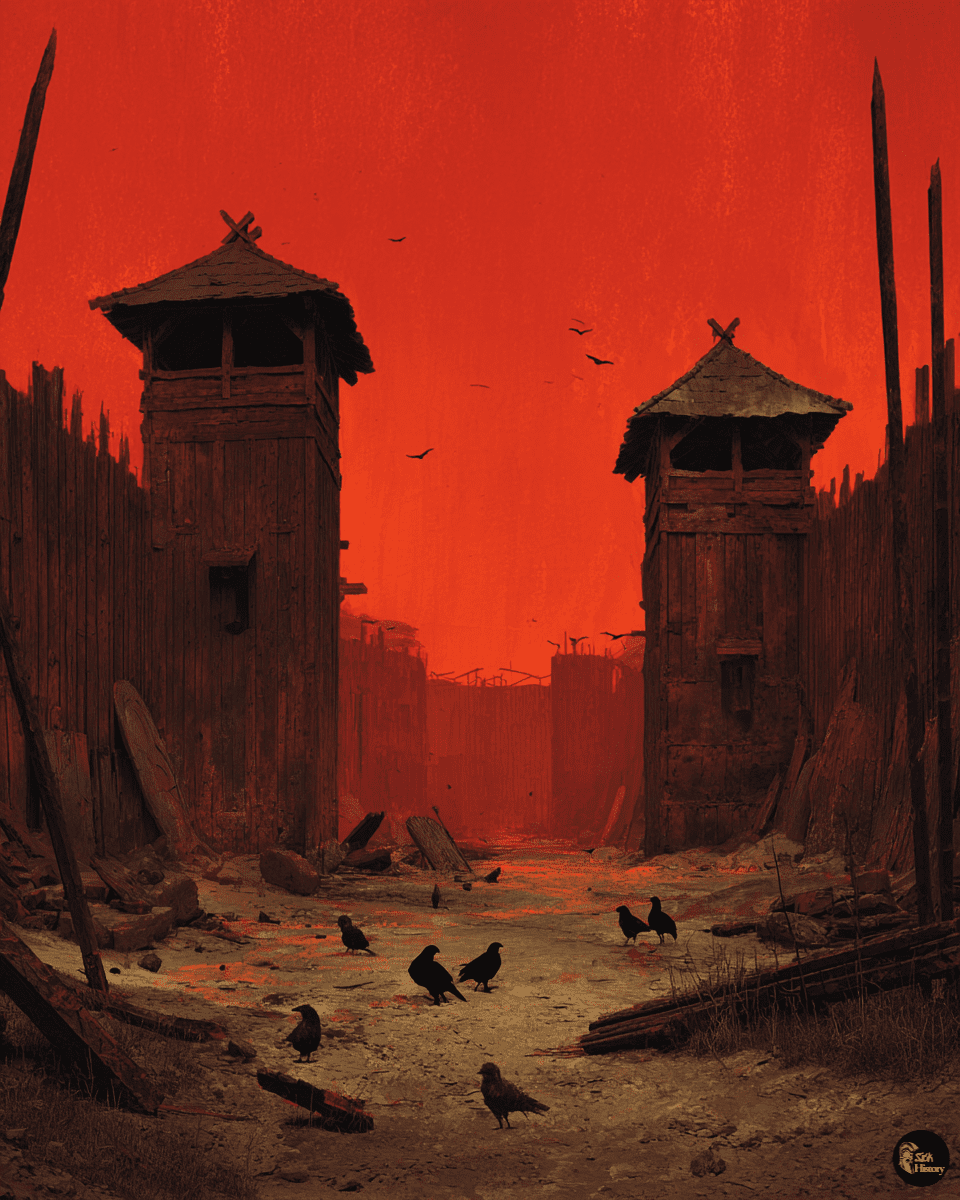Picture this: you’re commanding 5,000 of Rome’s finest soldiers, armed to the teeth and trained to conquer the world. One day you’re marching through the misty highlands of Britain, and the next… poof. You and your entire legion have vanished from history like a magic trick gone horribly wrong.
Meet the Legio IX Hispana—the Ninth Legion—whose disappearance remains one of history’s most baffling military mysteries. This wasn’t just any ragtag unit; this was a battle-hardened force that had helped build the Roman Empire. Yet somewhere around 120 AD, they simply… stopped existing.
No bodies. No mass graves. No dramatic last stand recorded by historians. Just silence.
The Ninth Legion’s disappearance has haunted scholars for centuries, spawning everything from academic papers to Hollywood blockbusters. Did they get massacred by painted Picts in some forgotten Scottish glen? Were they quietly transferred to another corner of the empire and conveniently forgotten? Or did something far stranger happen to Rome’s lost legion?
From Glory to Ghost Story: The Rise and Vanishing of Rome’s Ninth
The Ninth Legion didn’t start as a cautionary tale—quite the opposite. These guys were legends. Officially known as Legio IX Hispana after earning their stripes in the Spanish campaigns, they were the kind of military unit that made enemies wet themselves at the mere mention of their name.
The Good Times: Conquest and Glory
When Rome decided to add Britain to its ever-expanding collection of conquered territories, the Ninth Legion was right there in the thick of it. They helped crush the British resistance and set up shop in what’s now York—a strategic position that said “we’re here to stay” in the most Roman way possible.
But Britain wasn’t exactly rolling out the welcome mat. The locals had this annoying habit of not wanting to be conquered, and they made their feelings known through the traditional method of trying to kill every Roman they could find.

The Plot Thickens: A Trail Gone Cold
Here’s where things get genuinely eerie. The last solid evidence of the Ninth Legion dates to around 108-122 AD. After that? Radio silence. It’s as if someone hit the delete button on 5,000 soldiers.
The theories about what happened read like a choose-your-own-adventure book of doom:
- The Massacre Theory: They got wiped out by vengeful northern tribes in some epic but unrecorded battle
- The Transfer Theory: Rome quietly moved them elsewhere and they met their end in some other godforsaken frontier
- The Slow Death Theory: They were gradually disbanded after suffering too many casualties to remain effective
Adding insult to injury, even the legion’s sacred eagle standard vanished—a loss that would have been considered catastrophic in Roman culture. Losing your eagle was like losing your soul, and Romans really didn’t like losing their souls.
Life on the Edge: Roman Britain’s Deadly Frontier
To understand how an entire legion could vanish, you need to appreciate just how brutal Roman Britain really was. This wasn’t a peaceful colonial posting—this was the ancient equivalent of a war zone.
Hadrian’s Wall: The Ultimate “Keep Out” Sign
Emperor Hadrian took one look at the chaos in northern Britain and decided the best solution was to build a 73-mile-long wall across the entire country. When you’re building a wall that massive, you know the neighbors are more than just unfriendly.
This wasn’t just any wall—it was a sophisticated military installation dotted with forts, towers, and enough soldiers to populate a small city. The well-preserved Housesteads Roman Fort gives us a glimpse into what life was like for the poor bastards stationed on this frontier.
The archaeological finds tell a story of soldiers desperately trying to maintain civilization while surrounded by hostile territory. We’re talking about men who wrote letters home asking for more beer and warmer socks—hardly the image of invincible Roman might.
Archaeological Clues: The Ghosts Left Behind
The artifacts discovered at sites like Vindolanda paint a surprisingly human picture of Roman military life. These soldiers weren’t faceless war machines—they were real people dealing with homesickness, harsh weather, and the constant threat of death.
Personal items like gaming pieces and jewelry remind us that between battles, these men were just trying to pass the time and stay sane. The fact that such intimate objects survived while an entire legion disappeared makes the mystery even more haunting.
Boudicca’s Revenge: When Britain Fought Back
The Claudian invasion of 43 AD brought four legions to British shores, including our doomed Ninth. But the Romans seriously underestimated British resistance, particularly from warrior queens like Boudicca.
When Boudicca led her revolt in 60-61 AD, she didn’t just defeat Roman forces—she obliterated them. The Ninth Legion took such a beating that it’s a miracle they survived to disappear mysteriously decades later. Archaeological evidence of this carnage still turns up: burnt cities, mass graves, and layers of ash that tell the story of Rome’s bloodiest nightmare in Britain.

The Hunt for Answers: Chasing Ghosts Through Time
For nearly two millennia, historians and archaeologists have been playing detective with one of history’s most frustrating cold cases. Every new discovery raises more questions than it answers.
Theory Wars: How Do You Lose 5,000 Soldiers?
The academic community remains split on what happened to the Legio IX Hispana. Some scholars are convinced they were massacred in Scotland during a campaign that went spectacularly wrong. Others point to evidence that they might have been transferred to continental Europe, only to meet their doom in the forests of Germany or the deserts of the Middle East.
The discovery of a legion tile stamp in the Netherlands added a tantalizing clue, suggesting the Ninth might have been redeployed. But one tile stamp doesn’t tell us if they marched to glory or to their graves.
Digging for the Truth: Archaeological Treasure Hunts
At Eboracum (modern York), archaeologists have uncovered the remnants of the Ninth Legion’s fortress. The artifacts they’ve found read like a shopping list from hell:
- Pottery shards (because even doomed soldiers need to eat)
- Weapons and armor fragments (tools of the trade)
- Personal items like combs and gaming pieces (touching reminders of their humanity)
- Religious altars (prayers that apparently went unanswered)
These everyday objects make the legion’s disappearance even more unsettling. These were real people with real lives, not just statistics in a military ledger.
The Never-Ending Search: Modern Technology Meets Ancient Mystery
Today’s archaeologists are armed with technology that would seem like magic to ancient Romans. Ground-penetrating radar, metal detectors, and isotope analysis of human remains have revolutionized the search for ancient battlefields.
Yet despite all these fancy tools, the Ninth Legion continues to elude us. In an age where we can track a single person through GPS and social media, an entire Roman legion remains missing in action.
Perhaps that’s the most unsettling part of this mystery—it reminds us that some secrets take their answers to the grave, leaving us to wonder what other chapters of history have simply… vanished into the mists of time.

